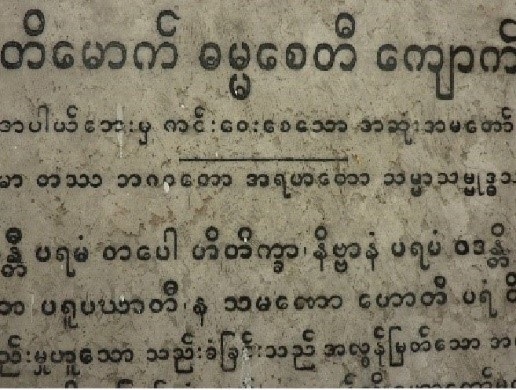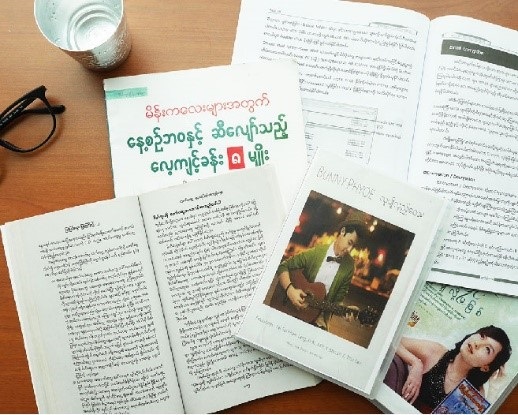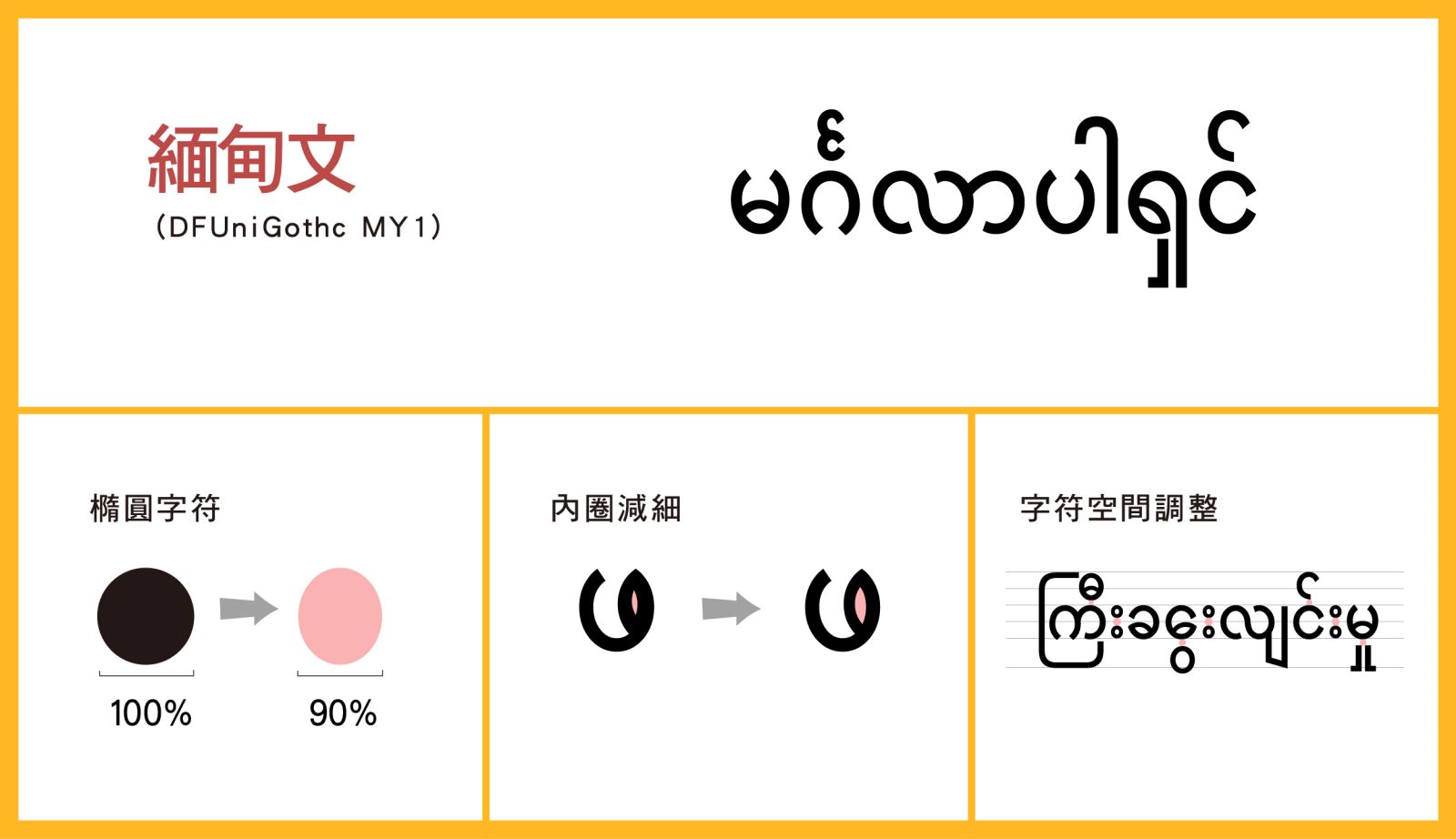DynaFont Multi-Language Font: UniGothic font (Burmese)
-01.jpg)
Oh Myanmar,
The impression that Myanmar leaves are more than this. The second stop of the DynaFont Story series takes us on a journey to learn more about the artsy Burmese characters!

▲Burmese classic
Before the establishment of Burmese, the Pyu and Mon languages were widely used in the Myanmar area. When compared, the structure of Mon characters was much simpler than Pyu. In addition, the people of Burmese had long identified themselves with Mon culture. Therefore, Myanmar king Anawratha (1044-1078) naturally turned his attention to the Mon language.
Passing down characters through engravings
The Myazedi Inscription (Note) erected in 1112 has the same content engraved in Pali, Mon, Pyu, and Burmese. From this inscription, we can see that the texts of the Myanmar area were not yet standardized. It was only until the period of Narapatisithu (1173-1210) that Burmese started replacing other languages in becoming the only official language.
Note: One of the most valuable inscriptions from the Kingdom of Pagan. Discovered near Bagan in 1911, the Myazedi Inscription contributed greatly to research on the history and language of Myanmar and is recognized as the beginning of Myanmar’s written history.
| ※ India and Southeast Asia Southeast Asia is deeply influenced by ancient China and India. China used to demand political tribute, while the culture and religion of Indian was passed to southeast Asian countries, which brought India political power in the district. Among the input of Indian culture in southeast Asia, religion had the most significant influence, while other impacts included written characters, art, and architecture. Indian culture and religion had a major influence on the ancient nations of Southeast Asia. |
Burmese texts belong to the Brahmi system and are made up of phonetic alphabets. In the early days, Burmese were carved onto palm leaves with sharp pens, therefore, to prevent the leaves from breaking, the characters where written in circles which formed the unique appearance of Burmese texts. Burmese texts include 33 consonants while each consonant has an “a” vowel when individually pronounced. Burmese is written horizontally from left to right with each syllable centered on the consonant letter while the surrounding consonant symbols or vowel symbols make a syllable. There are no marks between syllables in Burmese.

▲Books and DVD in Myanmar
Below are a few examples of Burmese phrases:
-06.jpg)
| ※ Burmese honorifics Burmese people use honorifics in daily communication. For instance, men refer to themselves as “male servant” while women use “female servant.” However, people also use “I” frequently during private conversations. However, using “I” in social gatherings will seem arrogant, since Pride is one of the “Five Poisons” in Buddhist teaching. |
The design concept of DynaFont UniGothic MY1

Burmese characters are made up of circles and semi-circles, giving an expanding visual impression that makes the reader tire easily. Therefore, the focus of design is centered on adjusting the curves and the recognizability of the fonts. Burmese is one of the more difficult characters to design.

-03.jpg)
A Message from the font designer
★ There are eight main ethnic groups in Myanmar: Myanmar, Mon, Shan, Kachin, Kayah, Karen, Chin, and Rakhine. Apart from common texts, each has their own spoken and written language.
★ The Myanmar group was the first to create characters among the eight ethnic groups. Burmese is the commonly used language and the official language of Myanmar. Myanmar cultivated many renowned writers, historians, and poets.
★ The basis of Burmese pronunciation is similar to あ, い, う, え, and お in Japanese.
★ When researching Burmese, I was particularly interested in the fact that like the Twelve Zodiacs in traditional Chines culture, Burmese culture also has a similar tradition. However, the animal zodiacs of Myanmar are divided with weeks, with a representing animal for each day. In particular, there is a different animal for the morning and afternoon of Wednesday, therefore there are eight zodiacs in total. These eight animals not only represent different days of the week but also different positions and celestials, subtly representing the traditional world view of Myanmar. Burmese people are named with the day of their birth. Therefore, Burmese people are usually very clear about the day of the week that they were born on; for me, this is a very special aspect of Burmese culture.
The DynaComware DFUniGothic MY1 introduced in this article is specially designed for screens on smart phones and electronic home appliances. Embedded type services are available.
More Information